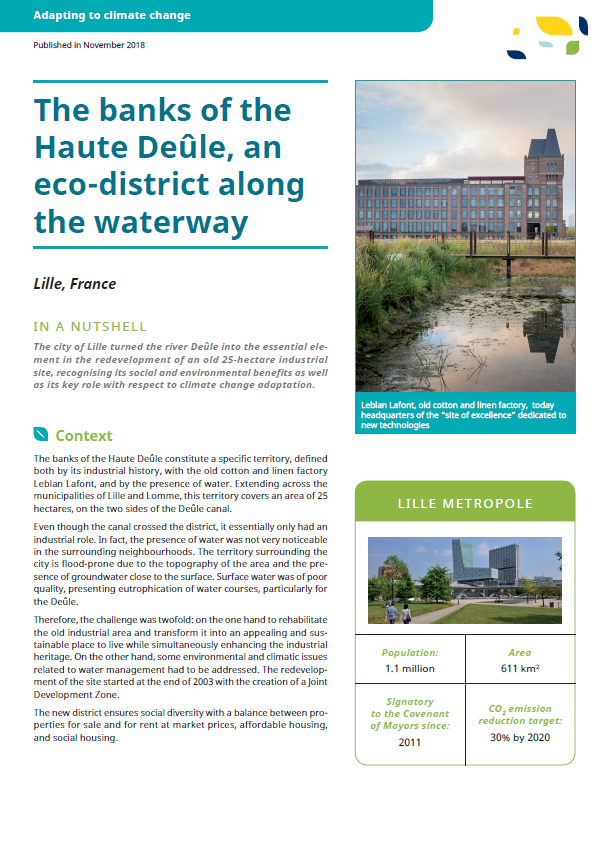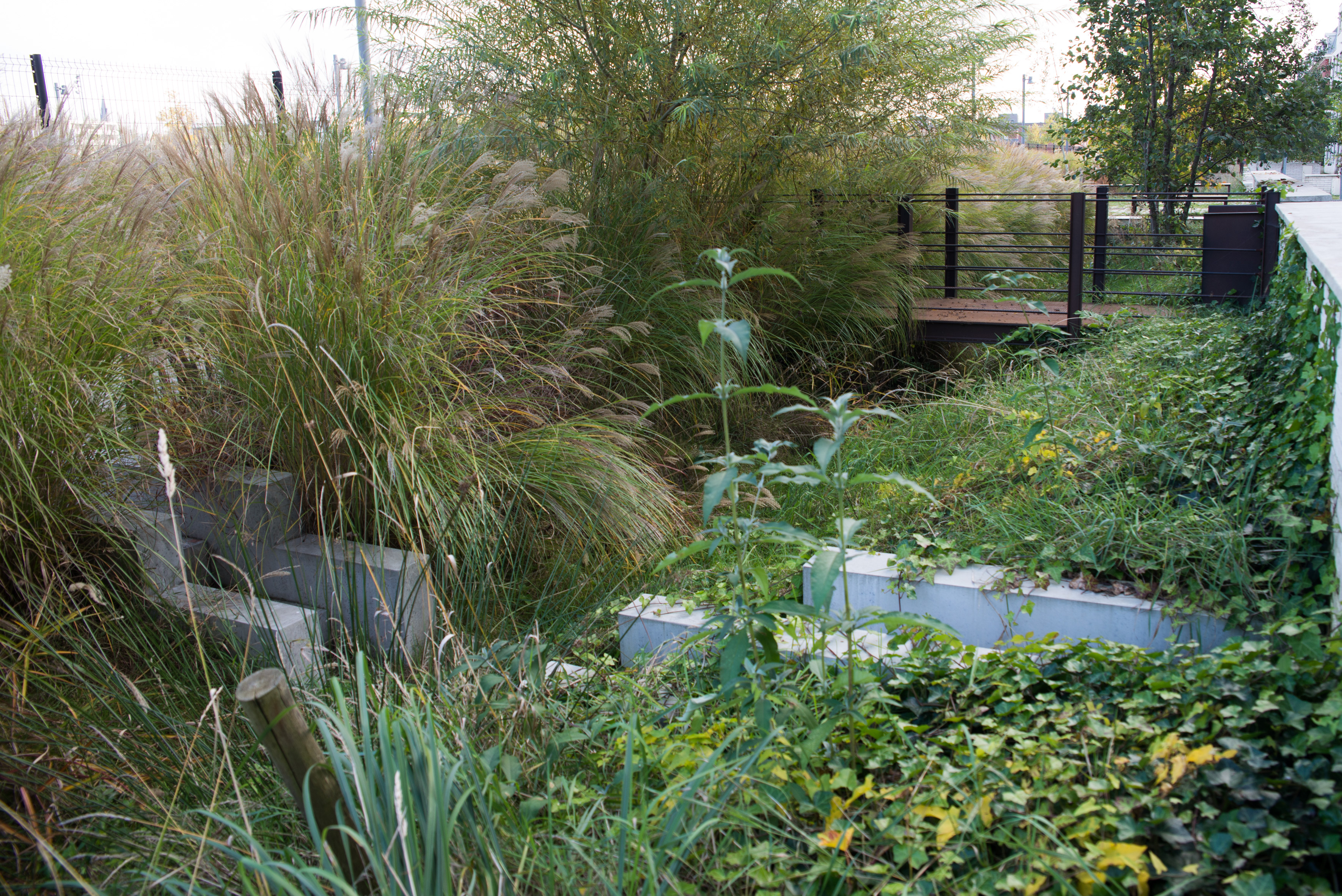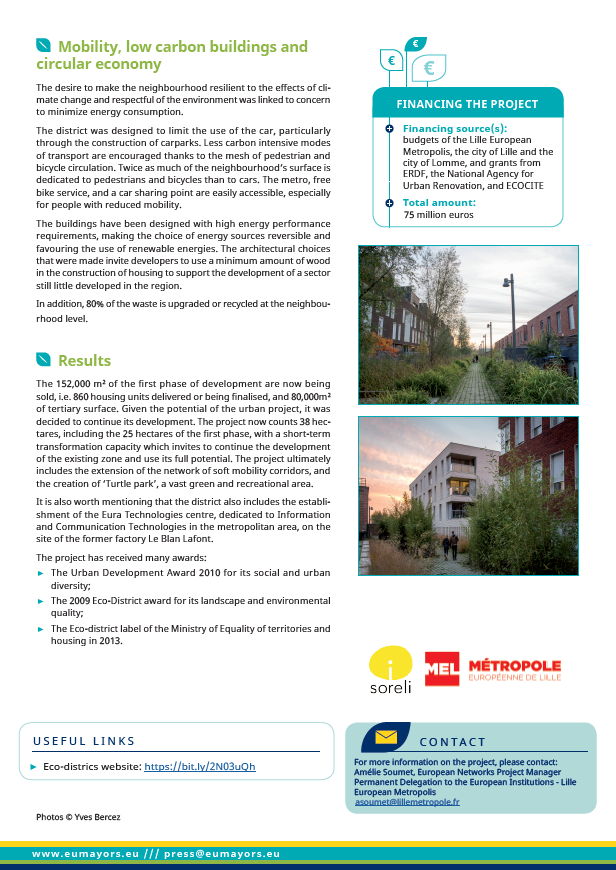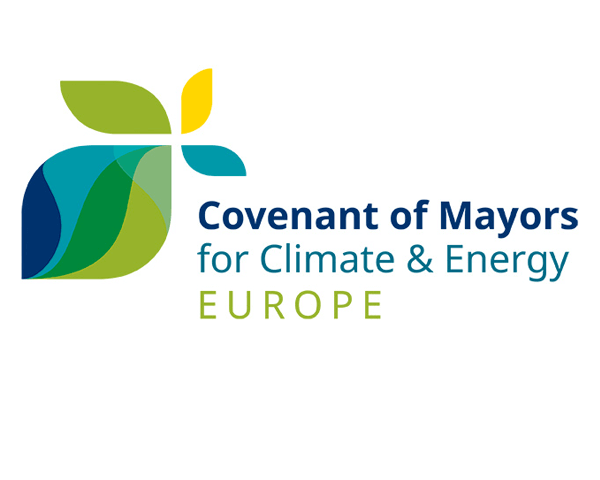The redevelopment of the site started at the end of 2003 with the creation of a Joint Development Zone.
Mobility, low carbon buildings and circular economy
The desire to make the neighbourhood resilient to the effects of climate change and respectful of the environment was linked to the minimization of energy consumption.
The district was designed to limit the use of the car, particularly through the construction of carparks. Less carbon intensive modes of transport are encouraged due to the provision of space for pedestrians and bicycle - twice as much of the neighbourhood’s surface is dedicated to pedestrians and bicycles than to cars. The metro, free bike service, and a car sharing point are easily accessible, especially for people with reduced mobility.
The buildings have been designed with high energy performance requirements, making the choice of energy sources reversible and favouring the use of renewable energies. The architectural choices that were made invite developers to use a minimum amount of wood in the construction of housing to support the development of a sector still little developed in the region.
In addition, 80% of the waste is upgraded or recycled at the neighbourhood level.
Public spaces rich in biodiversity
Although the average density of the neighbourhood is higher than in surrounding areas, the redevelopment of the district designated a large part of the area to public spaces which make up almost half the surface of the joint development zone. These public spaces involve the realisation of a green network including the planting of 1,000 trees, half of which are in the public space (10 hectares) and the creation of 25% green spaces (6.25 hectares) half of which are in the public space.
This green network creates a pleasant landscape frame as well as a biodiversity shelter and space for rainwater infiltration, and it attenuates the urban heat island effect. The choice of local species, used to living close to water, was favoured, and particular care was taken in the planting of trees using a spemanagement policy. Green spaces are also places for conviviality and ‘breathing spaces’, providing a better quality of life in an area marked by the high density of buildings.
A water cycle both regulated and respectful of the environment
It was decided to give emphasis to the presence of water by directing it to the heart of the neighbourhood, close to housing and offices.
The development prescriptions initially regarded the regulation of discharges into the natural environment:
- Set-up of a water basins and watersheds system bringing water downstream for regulated discharge into the canal;
- Integration of the watershed system with public spaces thanks to swales, canals integrated alongside roads, and water gardens;
- Qualitative treatment of water through sedimentation in the canals and through phytoremediation in the water garden;
- Rainwater management entirely based on gravity, due to refined altimetric management applied to the development of public spaces (rooftops with vegetation, storage tanks);
- Prohibition of irrigation with drinking water (public or private), collection and storage of rainwater through rooftops;
- Location of buildings decided based on the soil composition, in order to respect the balance of groundwaters as much as possible. In order to mitigate the risk of floods, the city has also decided to cap soil-sealing at 80%. Some management prescriptions have been formulated regarding the treatment of external mineral surfaces with maximum permeability in joints or materials. The technical specifications have also imposed a minimum ratio of open ground of 20% (applied to the 20% permeable soil), with local variation
The project now counts 38 hectares, including the 25 hectares of the first phase, with a short-term transformation capacity which invites to continue the development of the existing zone and use its full potential. The project ultimately includes the extension of the network of soft mobility corridors, and the creation of ‘Turtle park’, a vast green and recreational area.




